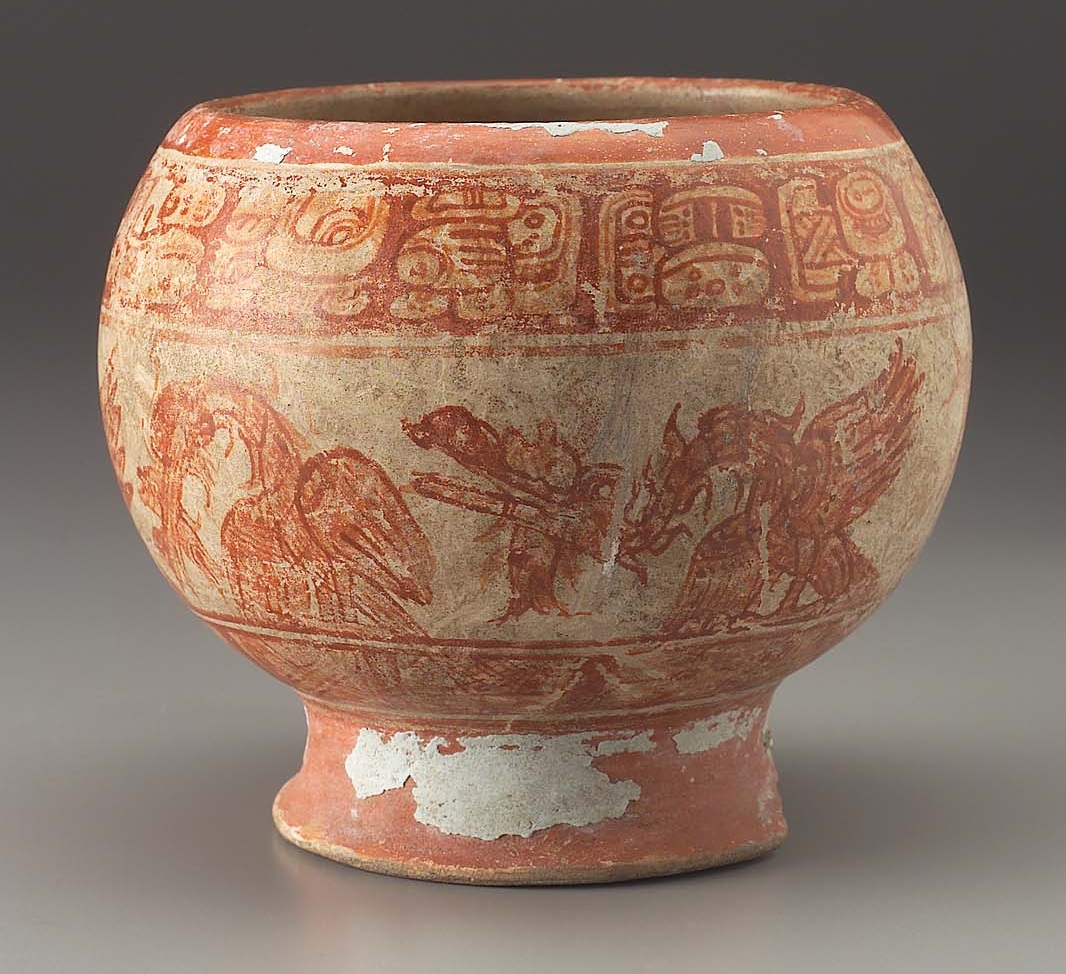Carmen and PACUNAM guests and scientists at Holmul, Guatemala.
In 2013, Dr. Francisco Estrada Belli (Ph.D., Boston University) led a team of archaeologists to make a groundbreaking discovery: an extraordinary Mayan frieze richly decorated with images of deities and rulers and a long dedicatory inscription at Holmul. The find made headlines around the world, and came as Estrada Belli’s team excavated in a tunnel left open by looters. The stucco relief stands along the exterior of a multi-roomed rectangular building, measuring 8m in length and 2m in height. “This is a unique find. It is a beautiful work of art and it tells us so much about the function and meaning of the building, which was what we were looking for,” Estrada-Belli, has said.
And six years later, he still hasn’t lost his passion for the site, leading Carmen, board members, donors and guests of Pacunam through Holmul (Yucatec for “head of the mountain”) as part of an organized tour following Tikal and El Zotz.
The Pacunam foundation, the Guatemalan nonprofit that fosters scientific research, sustainable development, and cultural heritage preservation, is led by Carmen’s longtime friend Marianne Hernandez, and has funded the Holmul Archaeological Project since 2013.
Maya archaeologist Dr. Francisco Estrada Belli and Carmen down under in Holmul.
Dr. Estrada Belli specializes in Maya archaeology, Remote Sensing and Geographic Information Systems. He is a fellow of the Society of Antiquaries of London and a National Geographic Explorer. He is the author of “The First Maya Civilization. Ritual and Power before the Classic Period” (Routledge, 2011) the first book on the origins of Maya civilization since 1977. He directs the multi-disciplinary archaeological project in the Holmul region, focusing on early developments of Maya civilization, human-environmental dynamics and Classic period political organization. He co-founded the Maya Archaeological Initiative, a non-profit organization that promotes research and youth education on Maya heritage, and serves as one of the members of the Archaeological PLI Committee (APLIC). Currently, he is Assistant Professor of Anthropology at Tulane University.
Dr. Francisco Estrada Belli in the Holmul's Royal Tombs. (Photo by Holmul Archaeological Project, 2015)
But let’s rewind back. One of the first Maya cities to be scientifically excavated in 1909, Holmul had very early origins. Already settled by 1100 BCE, earlier than most Maya hubs, Holmul became an important center in neighboring Cival’s Preclassic kingdom. By 350 BCE, Holmul boasted some of the most beautiful monumental sculpture in the Lowlands. Murals and stone carvings found in 2001 at Holmul showed Teotihuacan warriors and Maya lords engaging in rituals.
The legendary Teotihuacan emissary Sihyaj K’ahk was mentioned at the site in two occasions from 379 to 389 CE, supporting the view that Tikal and Holmul alike were connected to Teotihuacan (just outside of present-day Mexico City). Estrada-Belli believes that, like at Tikal, a new Holmul dynasty may have been installed by Tikal kings with the support of Sihyaj K’ahk’s.
Archaeologist Anya Shetler cleans an inscription below an ancient stucco frieze recently unearthed in the buried Maya city of Holmul in the Peten region of Guatemala. (Photo: cbsnews.com)
The discovery of the spectacularly decorated temple frieze at Holmul in 2013 changed views on Maya states. The carving and accompanying text clearly states that the Holmul ruler K’inich Tajal Chaak answered not only to Naranjo kings but to their patron, the king of Kaan, as of the year 600 CE. Hailing from the northern city of Dzibanche’, the Kaan kings had apparently control of the lands and routes to the west (La Corona) and to the east (Holmul) of Tikal.
Holmul was finally abandoned around 1000 CE, later than most other lowland sites. Holmul’s pyramids hide inside their bulk great examples of artistic and architectural development, making this site one of the best laboratories for studying the continuity—over 2000 years—of Maya history in the Lowlands.
Holmul-style footed bowl with Primary Standard Sequence rim text naming an elite person from the eastern Peten region of Guatemala. (Photo: mfa.org)
In a tomb in Holmul, Estrada Belli and his team also found a conch shell that had been made into a scribal ink pot and artifacts made of jade, obsidian, human bone, ceramics and marine shells. The name of Holmul is attached to a Late-Classic ceramic art style associated with the wider Holmul-Naranjo region, and characterized by a red and orange palette on a cream background.
Carmen and crew: “small machetes are essential in the jungle for cutting off branches and plants that get in your way”.
Surprising herself most of all with her endurance in exploring the Guatemalan forest in the name of archaeology, Carmen has said that a machete is a must in this adventurous endeavour. “They look sinister, but they’re simply essential for carving a path through the jungle, and cutting off branches and plants that get in the way. Not to mention, God forbid, dangerous snakes.” Well, to put it into perspective, noblewomen in the Maya culture used to have their teeth filed and shaped into points. It was, and is, literally a jungle out there.
RELATED READING:

















